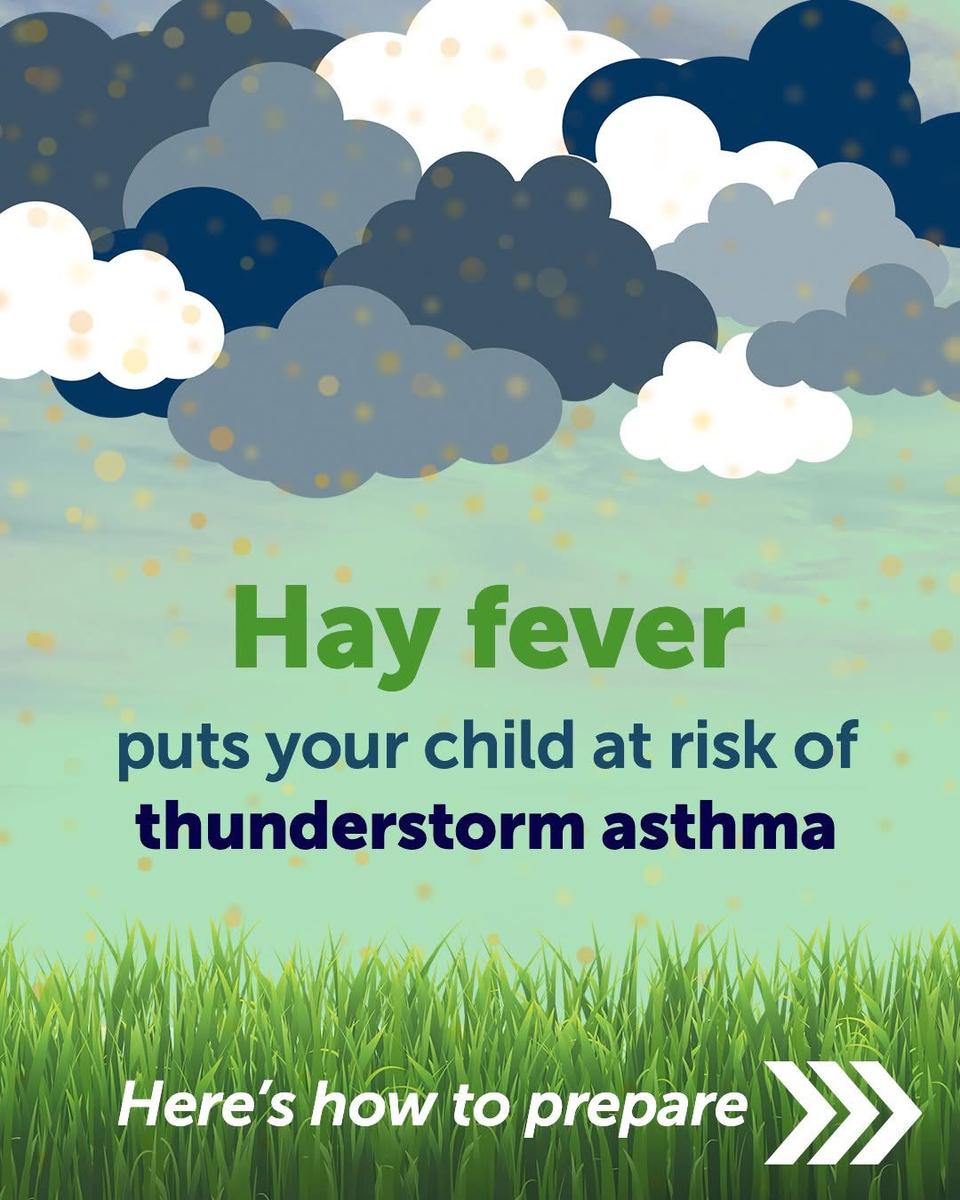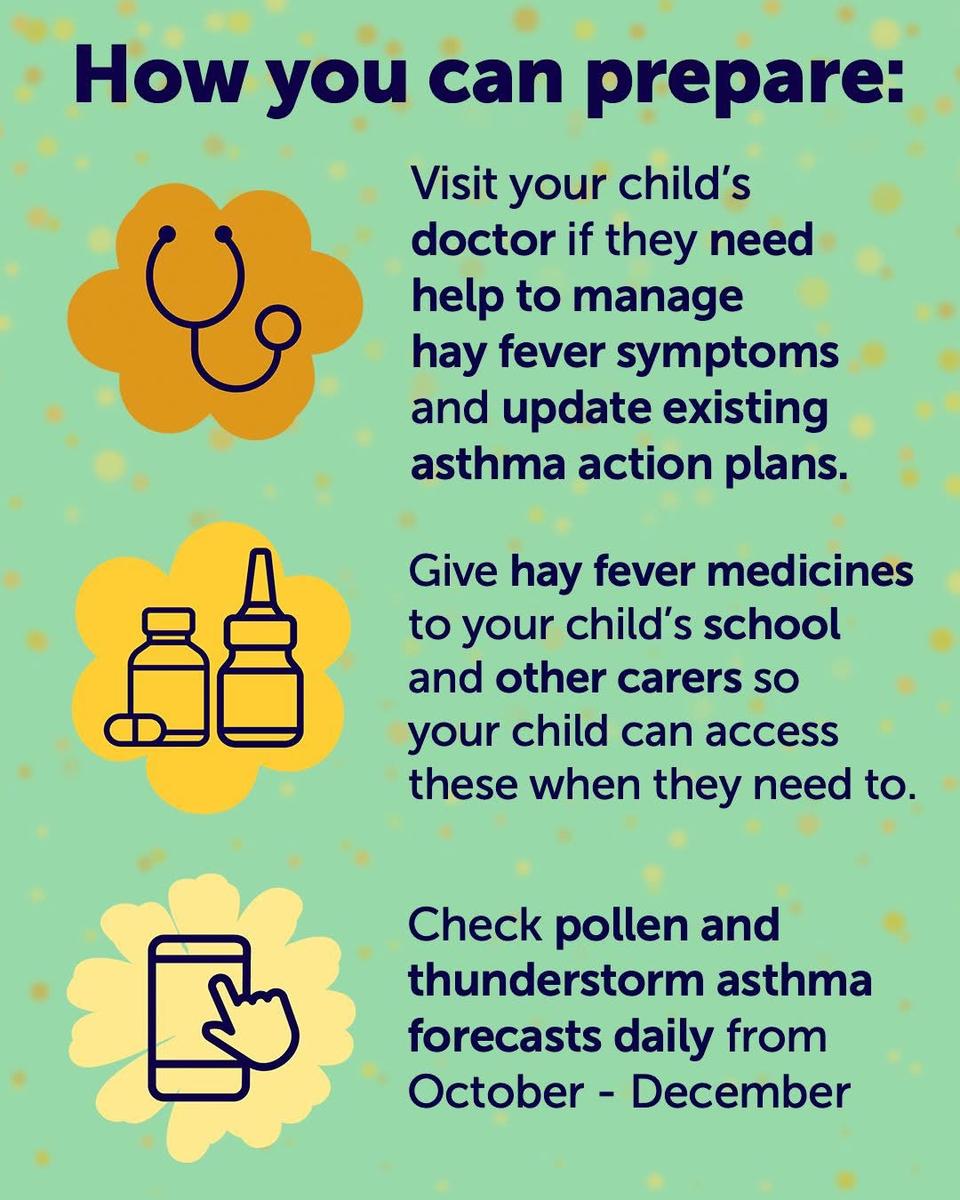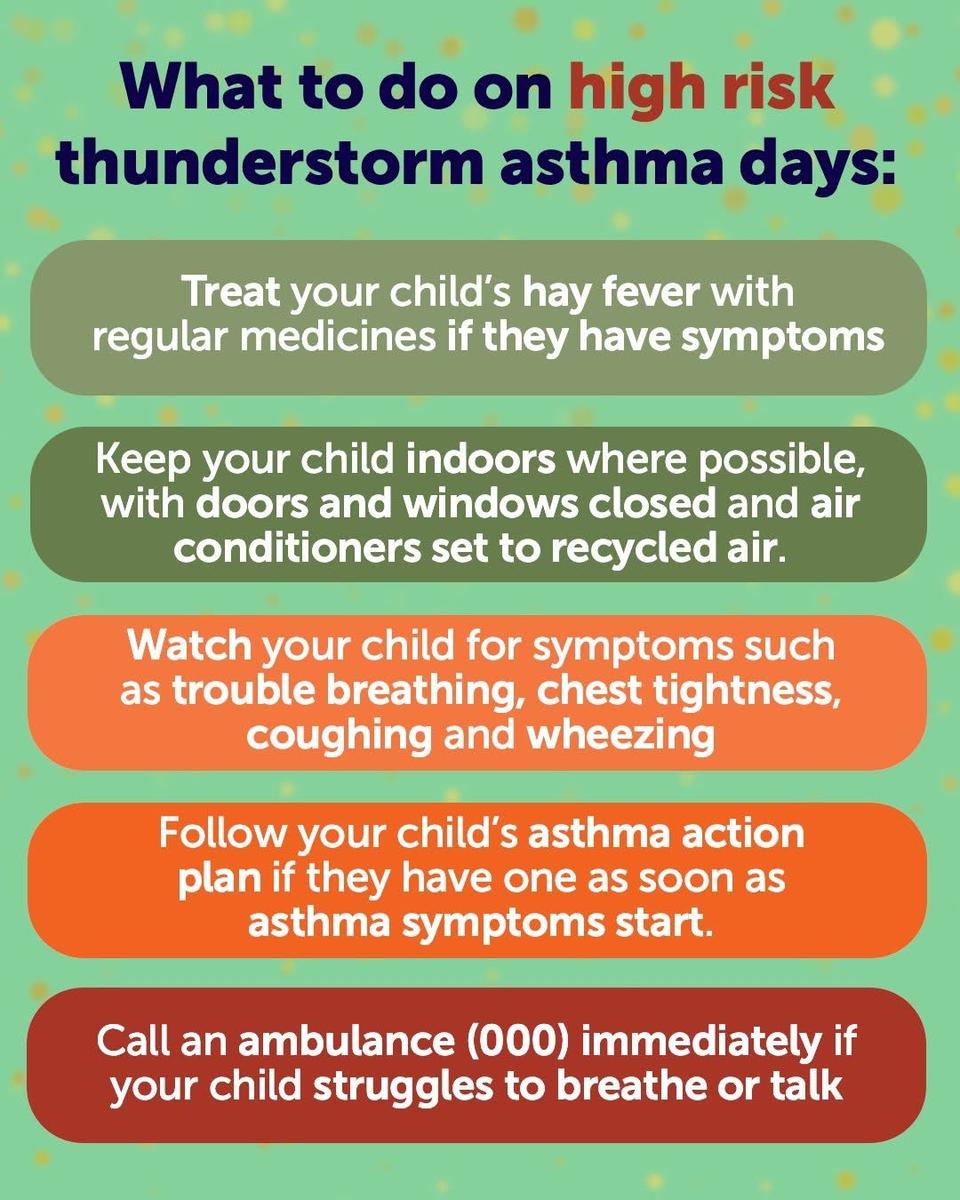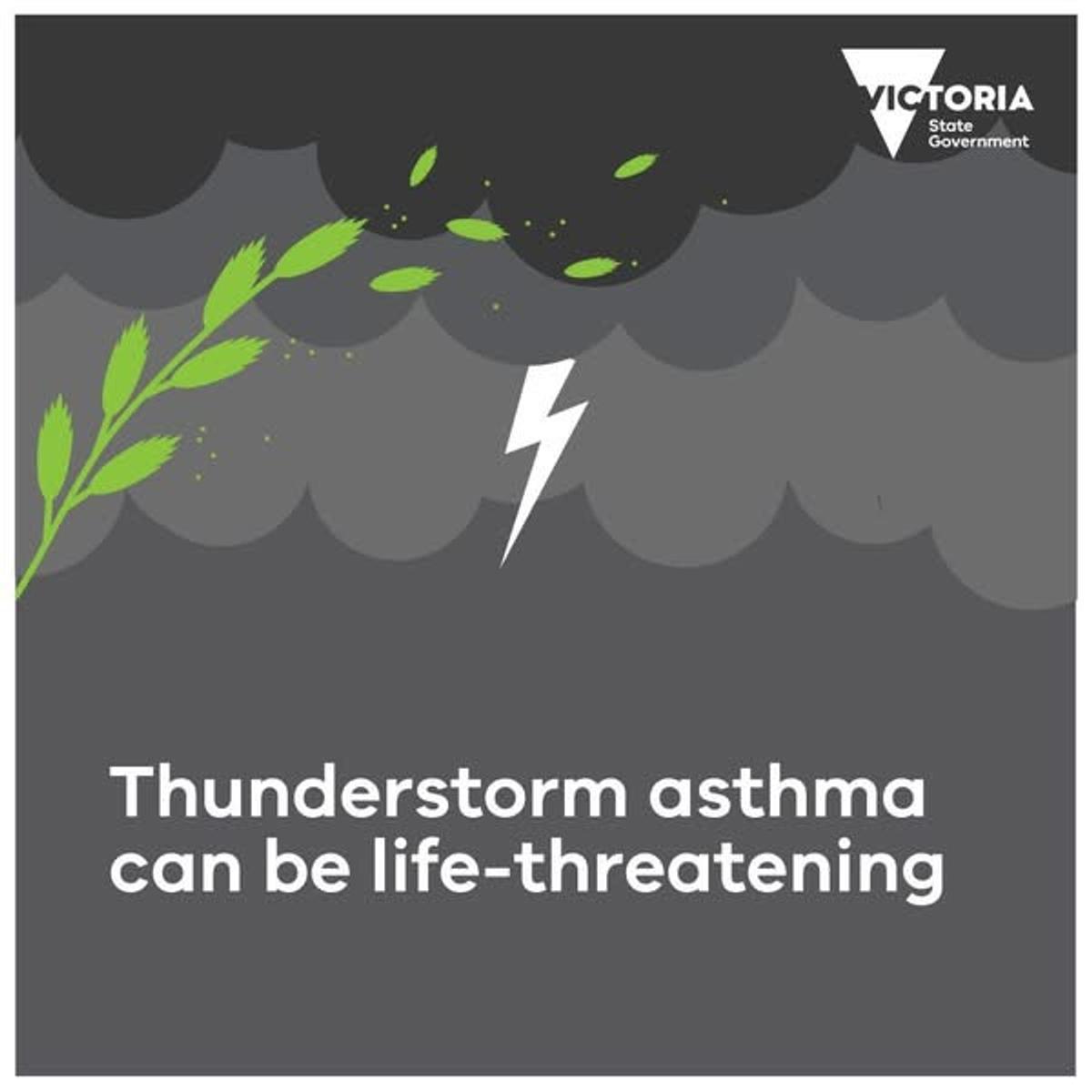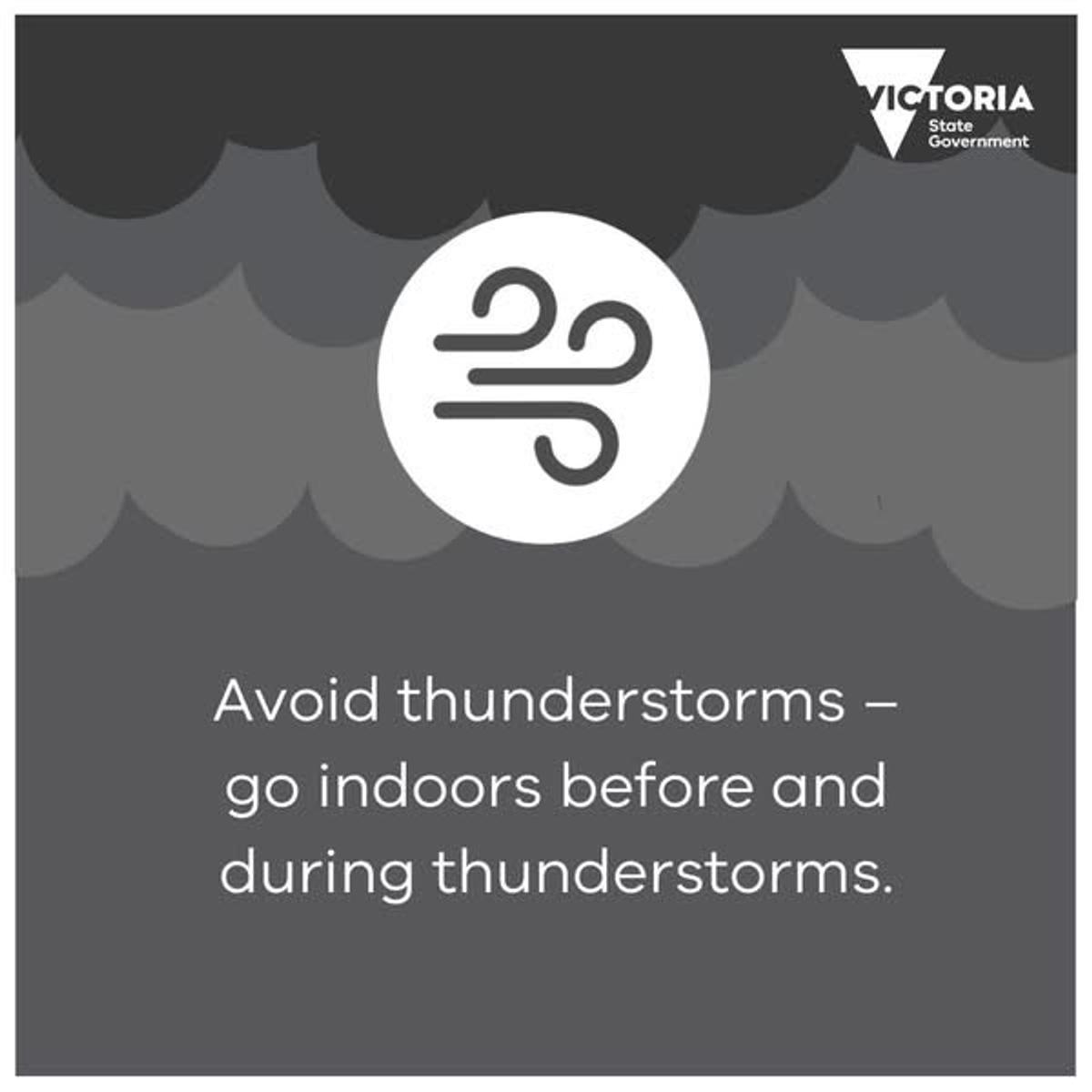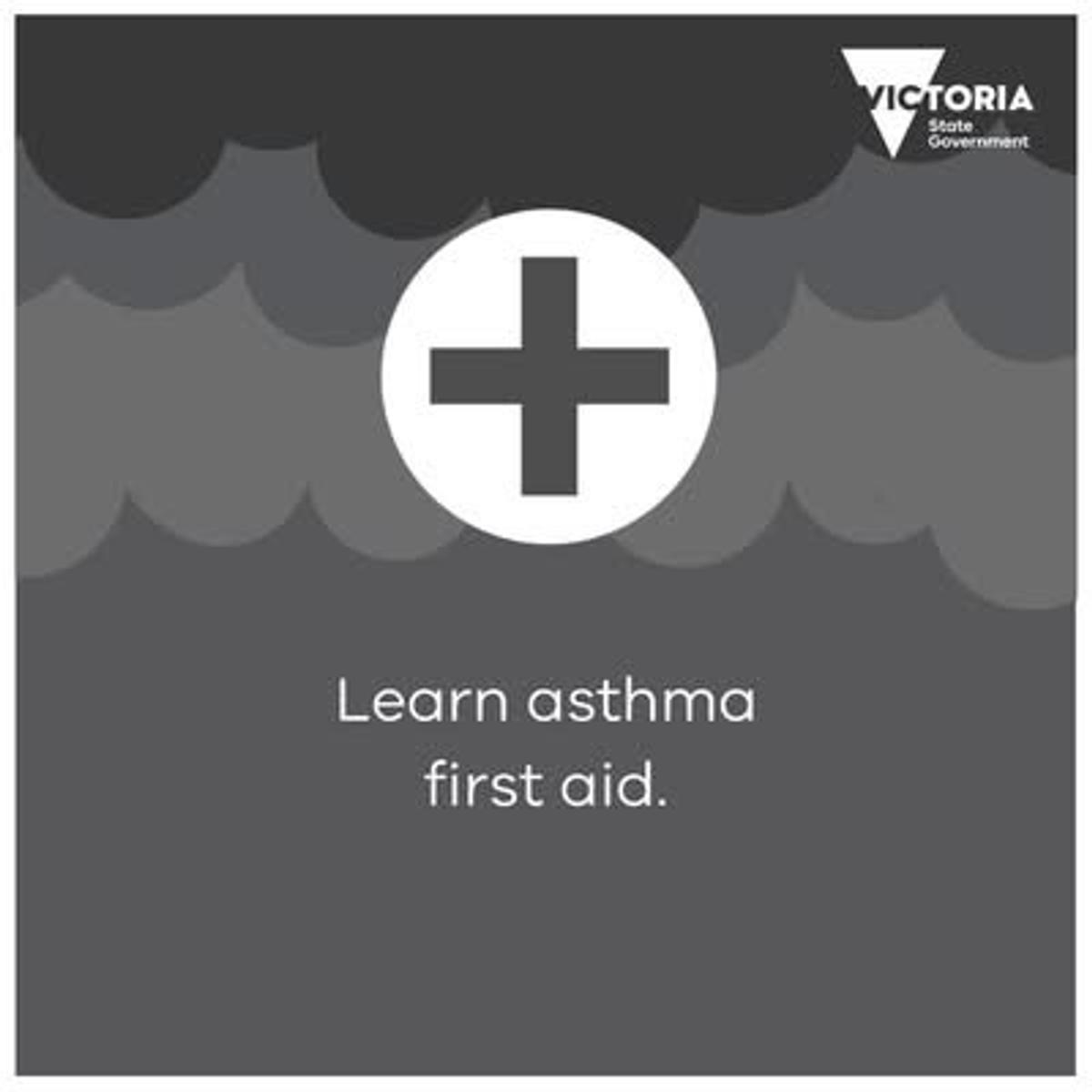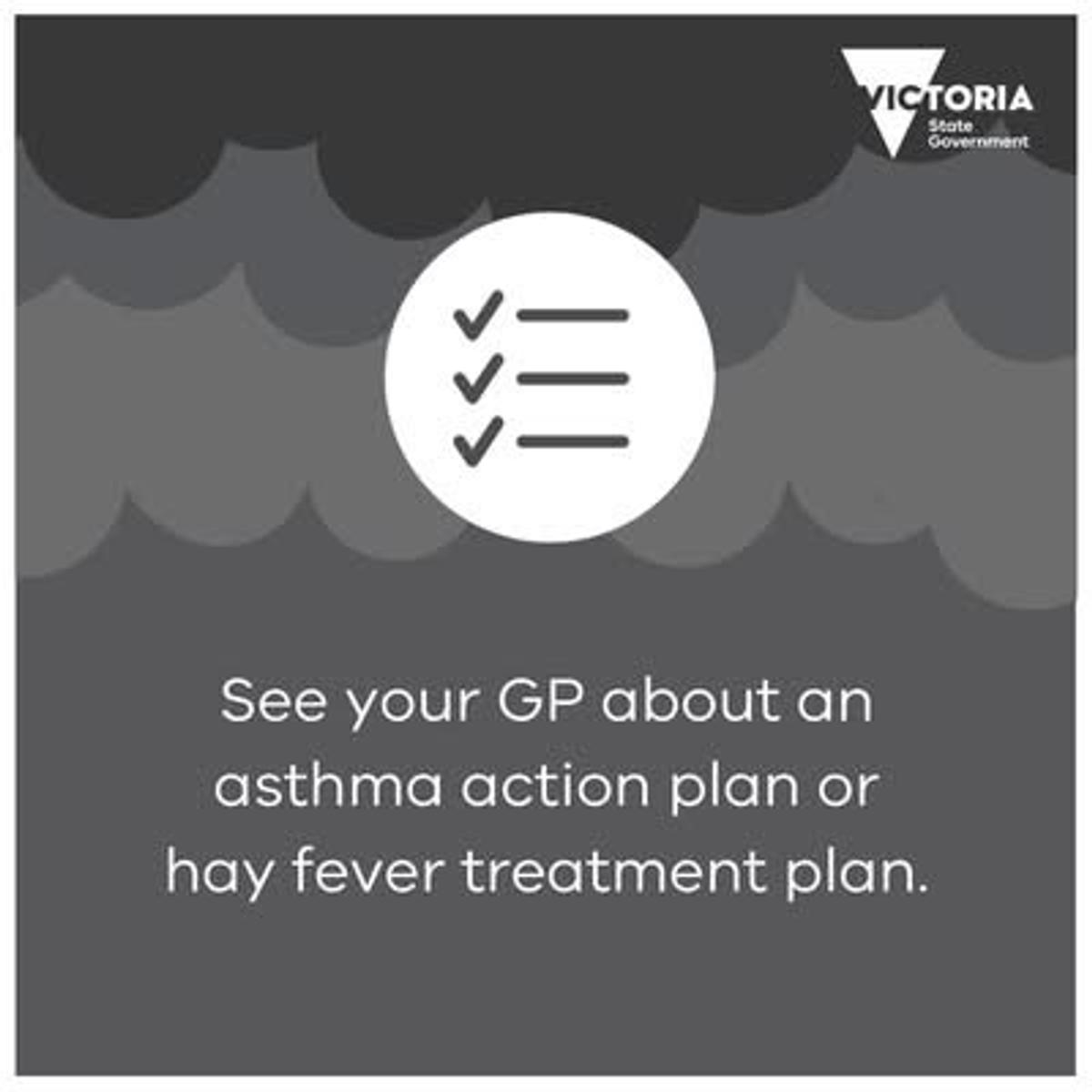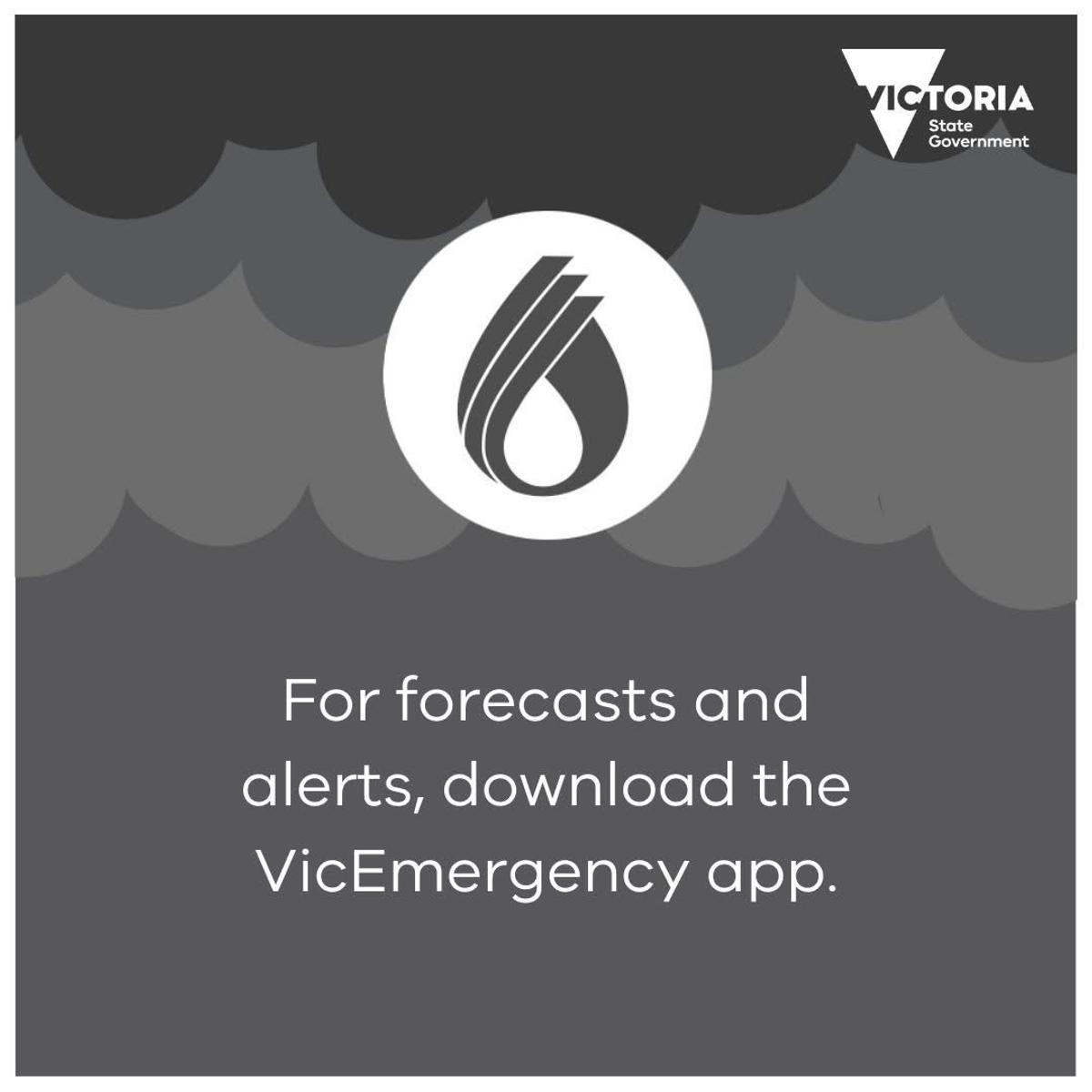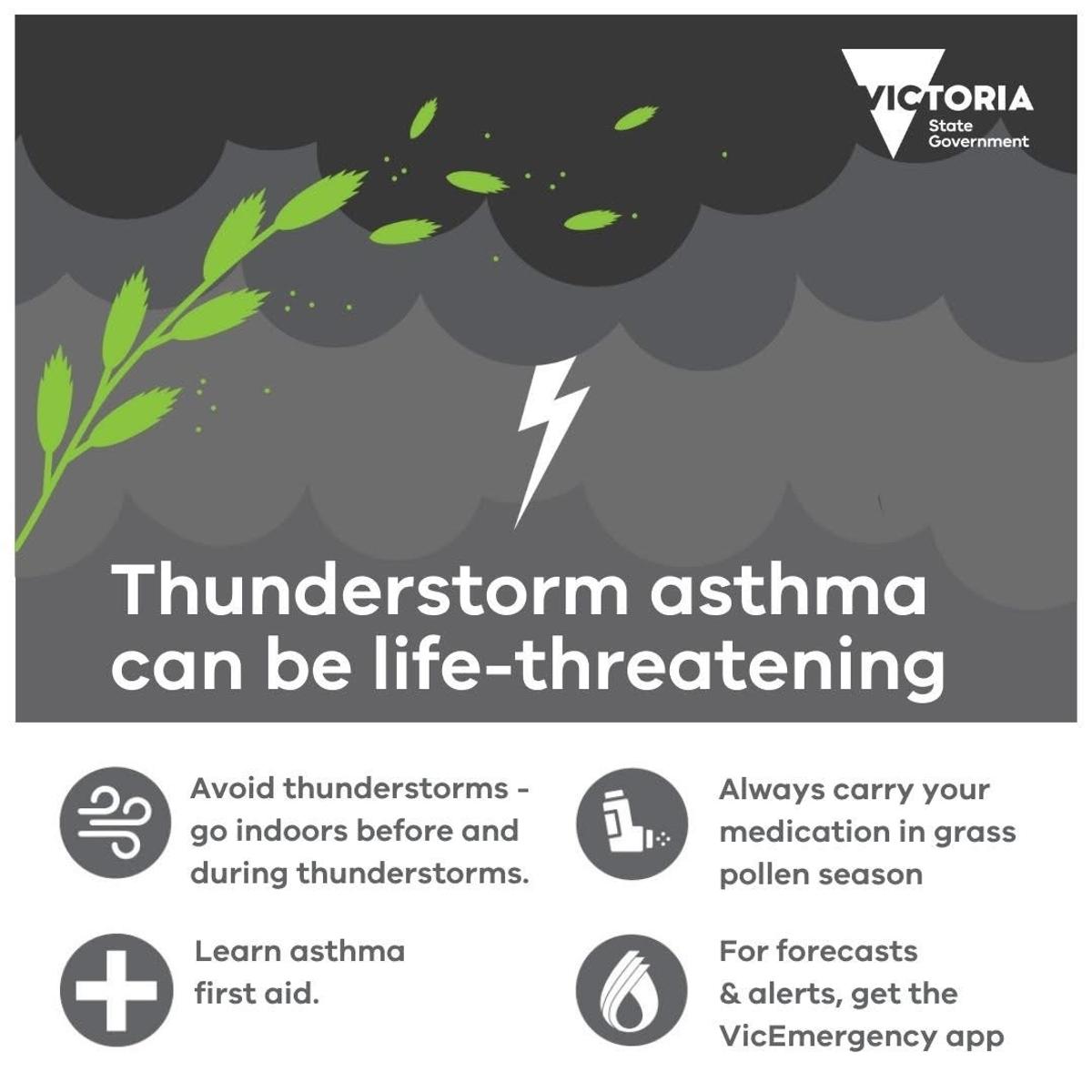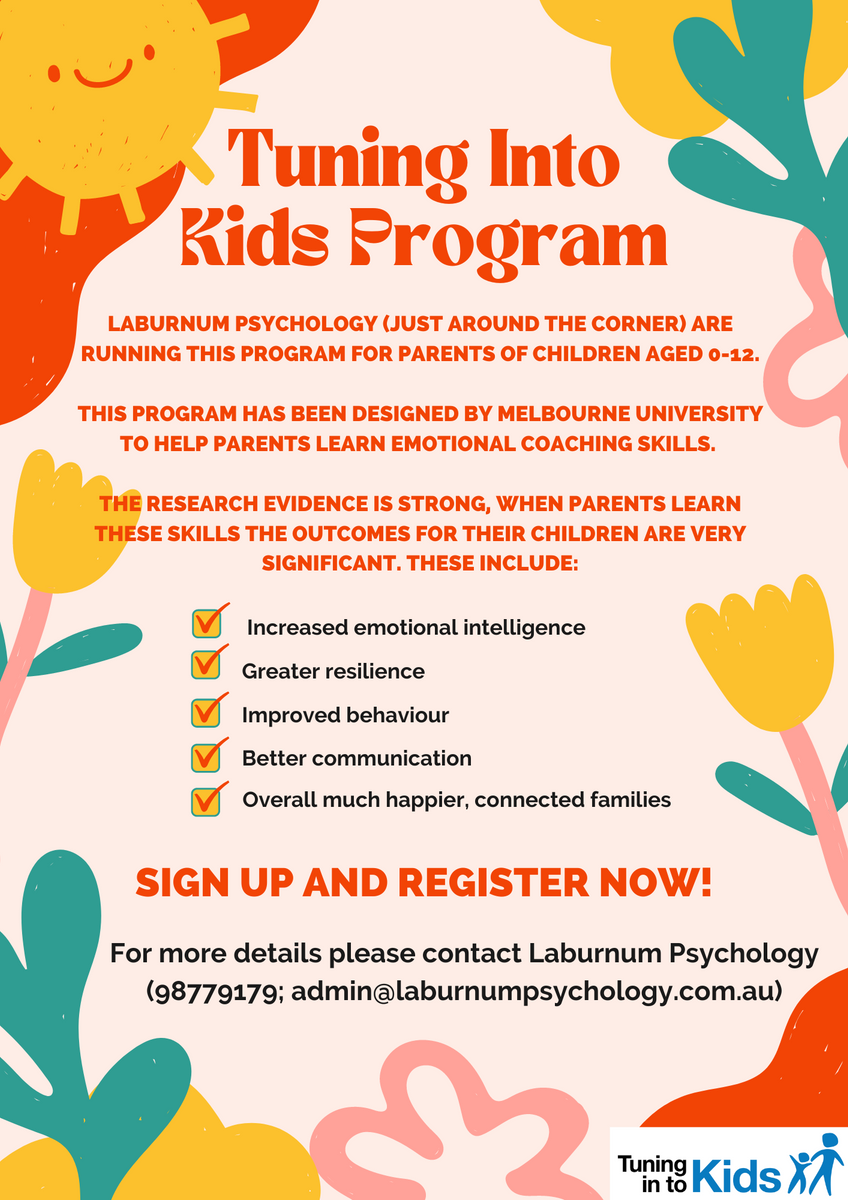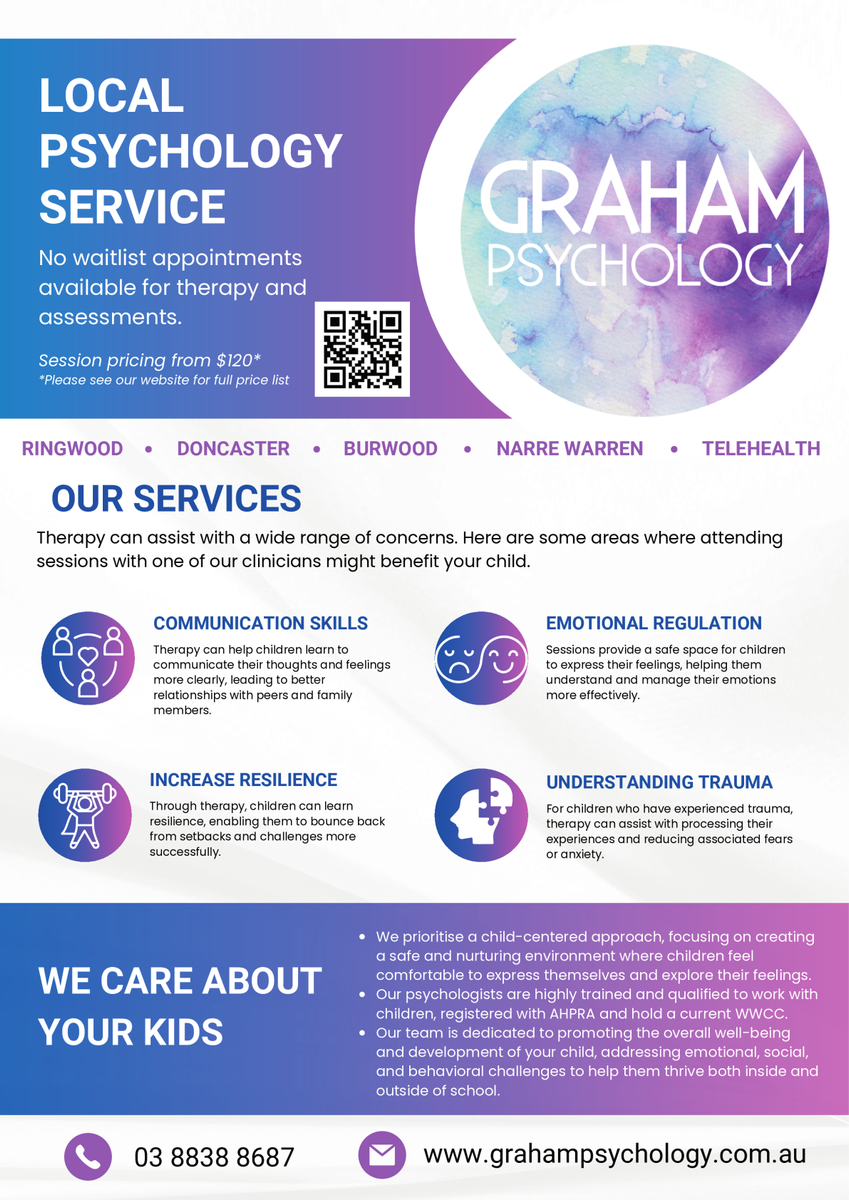Health & Wellness

Hayfever & Thunderstorm Asthma - Be Prepared!
From the Royal Children's Hospital:
- Having hayfever can increase your child's chances of experiencing Thunderstorm Asthma, even if they’ve never been diagnosed with asthma before.
- While it is rare, Thunderstorm Asthma can be serious, so it's important to know what to look out for and how your family can prepare on high risk days.
- If your child has been diagnosed with asthma before, make sure to follow their asthma action plan if they start experiencing asthma symptoms.
- Call an ambulance (000) immediately if your child is struggling to breathe or talk.
- For the full range of tips to help prevent and manage thunderstorm asthma, visit our Kids Health Info fact sheet: https://www.rch.org.au/kidsinfo/fact_sheets/Thunderstorm_asthma/
- Follow The Royal Children's Hospital, Melbourne for helpful tips, expert advice and the latest Kids Health Info resources.
The upcoming risk of thunderstorm asthma is October through to December.
🌩️⚠️ Thunderstorm asthma can be life-threatening.
In Victoria, even people with mild asthma or hay fever can be at risk.
Grass pollen season (October - December) brings the change of epidemic thunderstorm asthma.
👉 Protect yourself by:
✅ Signing up to VicEmergency alerts
✅ Going indoors before and during thunderstorms (especially with wind gusts)
✅ Speaking to your GP about an Asthma or Hay Fever Action Plan
✅ Taking preventer medication and always carrying a reliever
✅ Learning Asthma First Aid
Be prepared this storm season. 💙
More info: betterhealth.vic.gov.au/thunderstorm-asthma
Grass pollen season, which typically runs from October to December each year in Victoria, brings an increase in asthma and hay fever symptoms. It also increases the risk of thunderstorm asthma. For people with asthma or hay fever, especially those who experience wheezing or coughing with their hay fever, thunderstorm asthma can be sudden, serious and even life threatening.
Blackburn Primary will implement a range of measures to keep our school community safe as the risk of thunderstorm asthma increases.
Many of our staff are trained in asthma first aid. We will monitor the VicEmergency app to receive thunderstorm warnings and, where appropriate, keep students indoors when weather forecasts identify greater risk.
During the season, there are some things you can do to prepare and protect yourself and your family:
- If your child has ever had asthma, talk to your doctor about what you can do to help protect them from the risk of thunderstorm asthma this pollen season, including updating your asthma action plan. Taking an asthma preventer properly and regularly is key to preventing asthma, including thunderstorm asthma.
- If your child has hay fever, see your pharmacist or doctor for a hay fever treatment plan and check if you should have an asthma reliever puffer. These are available from a pharmacy without a prescription.
- If your child has hay fever and experiences wheezing and coughing, it is important to make sure they don’t also have asthma. Speak to your doctor about an asthma action plan.
- Where possible, avoid being outside during thunderstorms from October to December, especially during the wind gusts that come before the storm. Go inside and close your doors and windows. If you have your air conditioning on, turn it to ‘recirculate’.
Protect yourself this pollen season – managing asthma and allergies matters!
For more information, speak to your doctor.
You can also refer to the Better Health Channel website.
Laburnum Psychology
Tuning Into Kids PROGRAM FOR PARENTS
Graham Psychology

